Gardening Log 2
Previously: Gardening Log 1
This was a terrible April for planting. The first half of April was almost drought-like and it reached June temperatures.
My family has had better success at planting crops than me. I have experienced misfortune—mostly my fault—like removing the protection of my sunflower seedlng too early (they got eaten the next day), and planting unviable 12-year-old seeds which have long shriveled and given up on life.
In early April, we built frames for the garden beds.
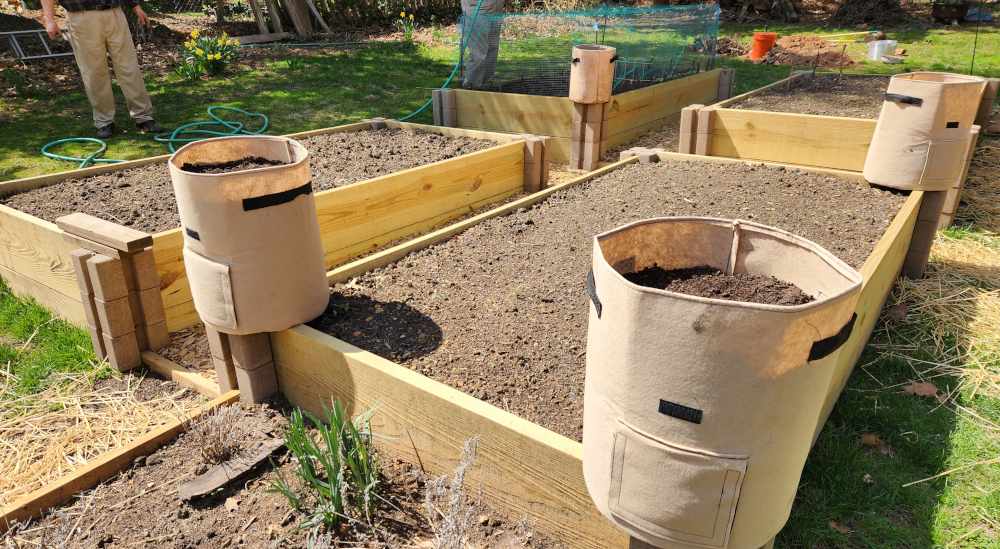
Do you like our corner potato bins?
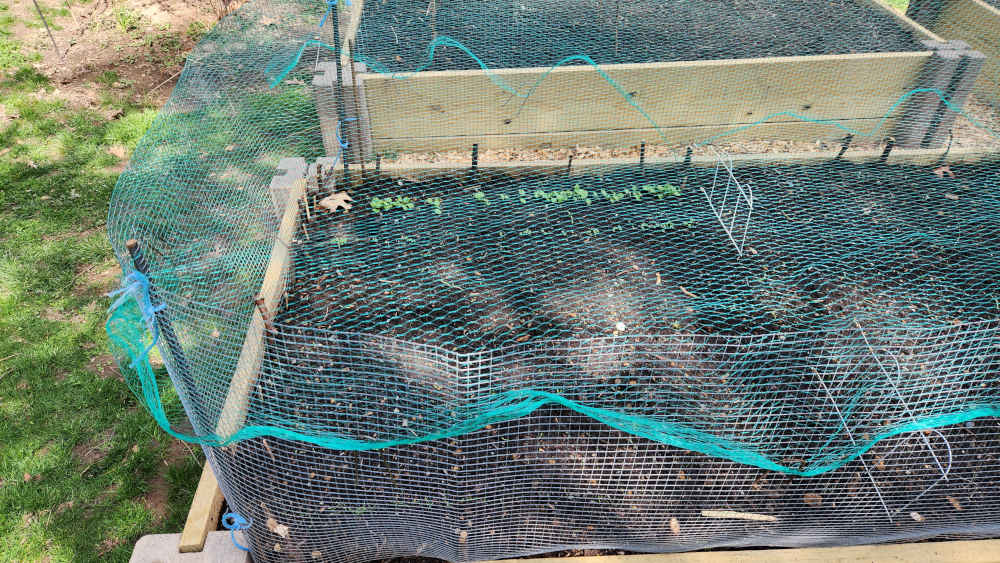
The first pen. Daikon sprouts already popping; so easy to grow.
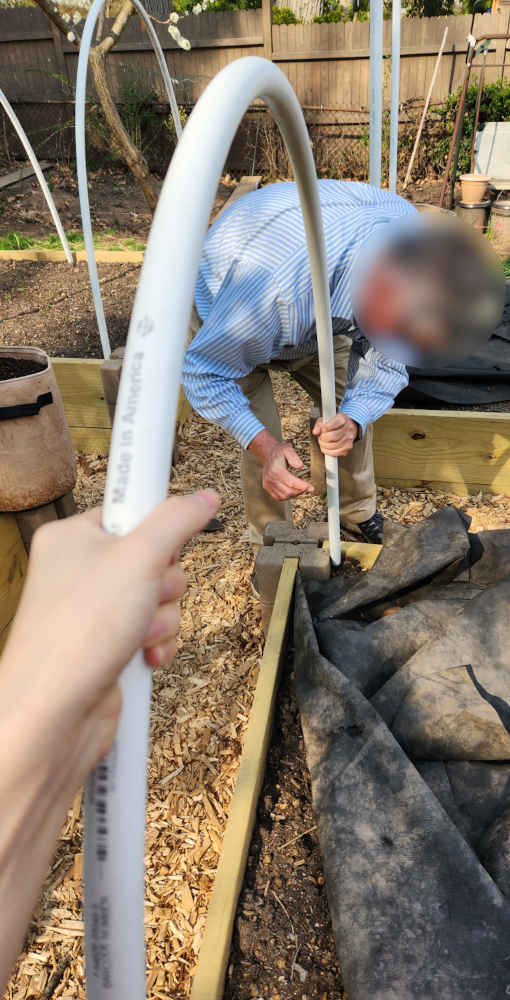
A 10-foot long PVC pipe (3/4" Schedule 40) can be bent into a parabola when it’s 70℉ degrees outside.
Many YouTube gardening videos say that PVC is too brittle to bend. Also, YouTube’s algorithm likes to show me the complicated PVC bending method, where you fill the pipe with sand and then take a hairdryer and heat it up. Geez, that is so much work!
In the winter, yes PVC is too brittle, but in the summer, it’s perfectly doable by hand. The strangely hot weather was an opportune time to bend hoops.
Our beds are 4 feet wide. For beds less than 4 feet, the bend might be too severe for the plastic without a heatgun to soften it.
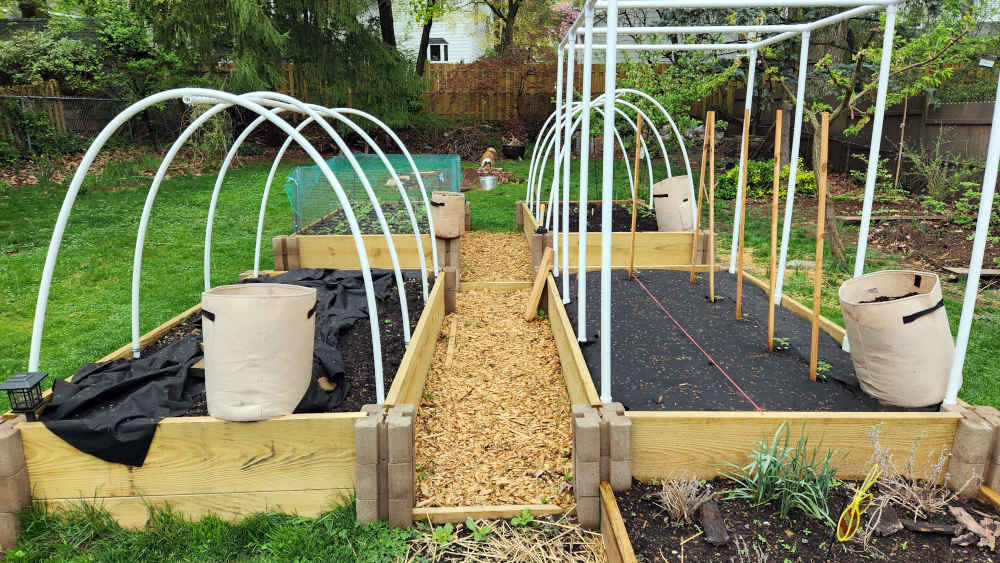
Hoop structures done. One bed has a tall rectangular frame to accomodate tomatoes, which grow to 5 feet.
In terms of cost, the hoops are much cheaper than the rectangular frame. For joining the corners, PVC fittings are the expensive parts, but they’re the easiest way to build an 6-feet-tall structure.
The hoops are cornerless, so we save money foregoing fittings. To keep the hoops secure, we screwed in holders to the wood, like these 27mm pipe strap clamps.
We used zip-ties to attach a spine to the hoops, and the frame is very sturdy.
Hoop Curve Calculator #
Using this catenary calculator, you can determine the size and appearance of your hoops.
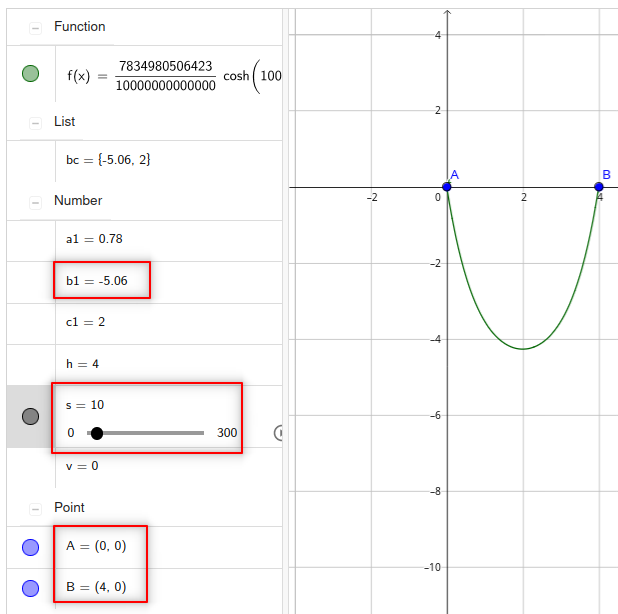
On this calculator, first set the s = total length of pipe. In my case, s = 10 feet. Then set A, B to the width that the hoop will span. In my case, the garden beds are 4 feet wide, so the coordinates are A = (0,0) and b = (4,0) respectively.
Then check the b1 value for the height of the hoop. In my case, the hoops ended up around 4.5 feet tall, slightly shorter than the projected value, because the pipe can be bent to have a wider curve.
This calculator is a good starting point to find the limits of pipe length. The curve is negative since this is normally used to calculate chains, but the same math applies to arches.

Dill growing in the herb garden.
The 12-year-old dill seeds are thriving! A miracle!

Strange mushrooms, do not eat. The baby yellow ones look like foam sponges, and they mature into a murky swamp black.
In the last week of April, a multi-day rain shower descended upon us. I would’ve expected such rain to come earlier.
Good Morning, First Day of May #
It’s a nice, brisk morning—
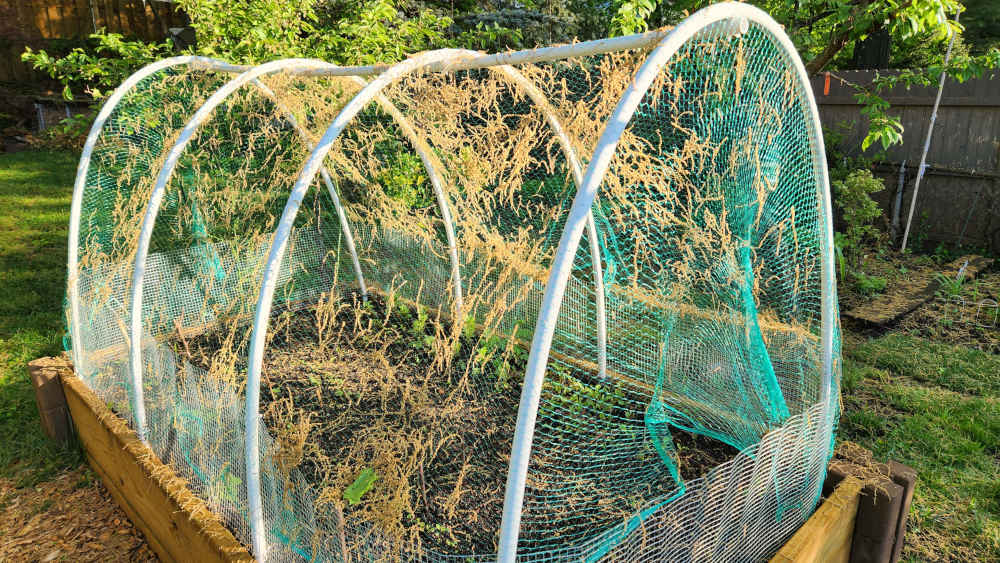
Oak pollen clumps everywhere…
Because we had a mild winter this year, and a hot dry stint of weather, the pollen count has increased. Flowers bloomed earlier than usual.
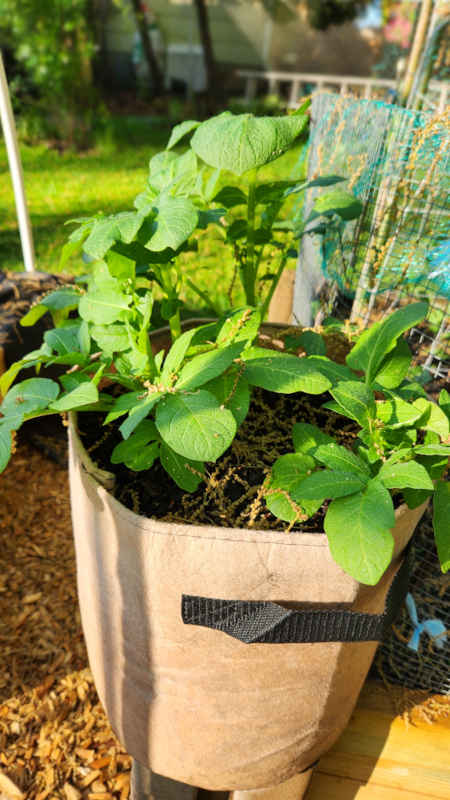
Corner potatoes vigorously sprouting.
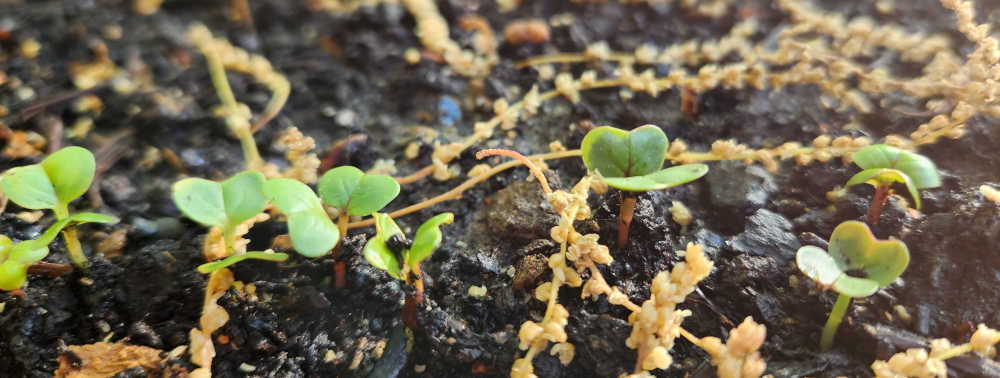
Radish seedlings emerging.
Unfortunately, our 12-year-old radish seeds failed to bloom, so I replanted fresher ones. Hence they’re a little late this year.